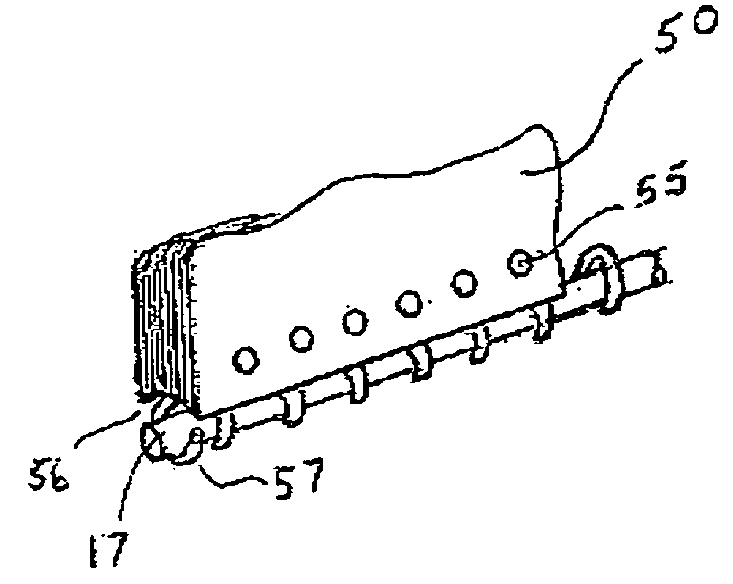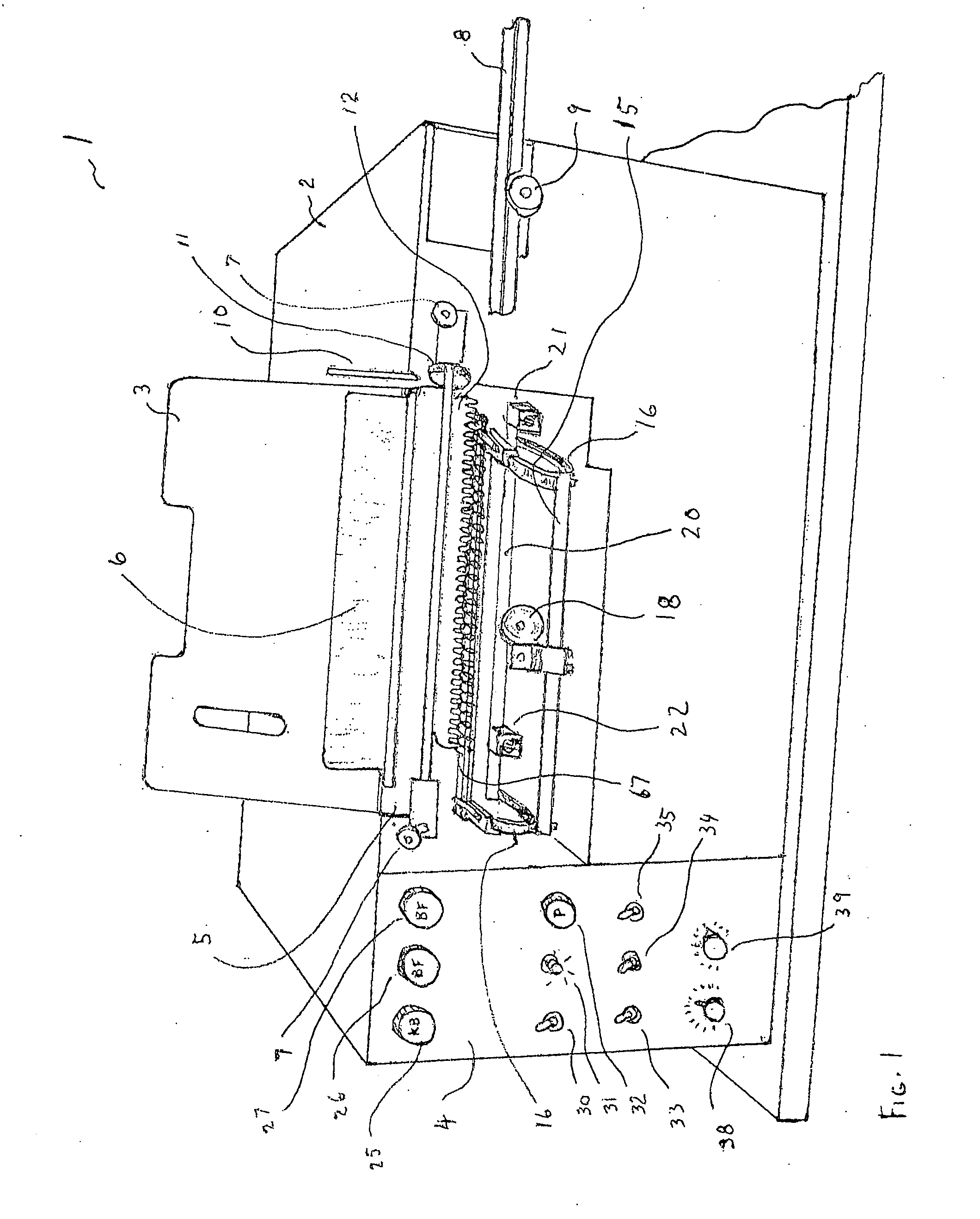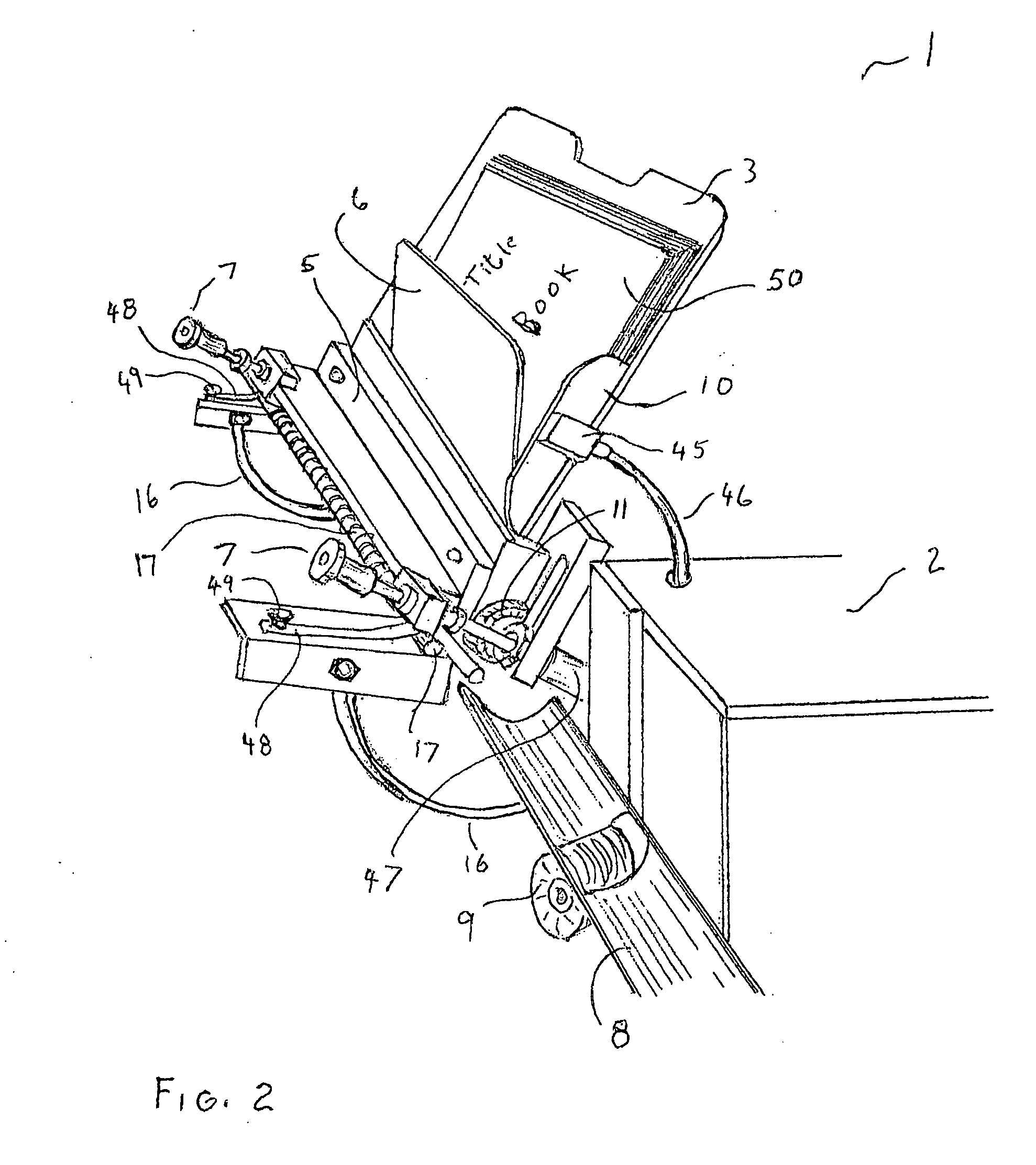Semi-automatic plastic spiral binding machine
a plastic spiral binding machine and semi-automatic technology, applied in the field of book binding, can solve the problem that the exact tool for the particular thickness cannot be used to form the sheets properly, and achieve the effect of reducing the cling
- Summary
- Abstract
- Description
- Claims
- Application Information
AI Technical Summary
Benefits of technology
Problems solved by technology
Method used
Image
Examples
Embodiment Construction
[0041]FIG. 1 shows binding machine 1 of this invention prior to the introduction of the book pages. Housing 2 encloses the pneumatic and electrical components of this table-top binding machine. Operating panel 4 houses the operator controls. Circular arc brackets 16 connect book forming carriage bar 67 to vibrator bar 15 (with vibrator 18) to cutter bar 20 (with cutter / crimpers 22 and 21) permitting the book forming carriage bar 67 to be raised into position as shown or alternatively the cutter bar 20 to be placed into position at that phase of the operation, as shown in FIG. 5.
[0042]As shown in FIGS. 1 and 2, back book support 3 is angled backwards while page guide 6 is angled forward. Angled stop 10 sets the pitch angle to match the binding spiral. Comb guide 12 guides a binding spiral during insertion. A page holder, such as book clamp 5, with gap adjusters 7 holds the book pages together after forming. Spiral conveyor or trough 8 receives the binding spiral which is conveyed int...
PUM
 Login to View More
Login to View More Abstract
Description
Claims
Application Information
 Login to View More
Login to View More - R&D
- Intellectual Property
- Life Sciences
- Materials
- Tech Scout
- Unparalleled Data Quality
- Higher Quality Content
- 60% Fewer Hallucinations
Browse by: Latest US Patents, China's latest patents, Technical Efficacy Thesaurus, Application Domain, Technology Topic, Popular Technical Reports.
© 2025 PatSnap. All rights reserved.Legal|Privacy policy|Modern Slavery Act Transparency Statement|Sitemap|About US| Contact US: help@patsnap.com



